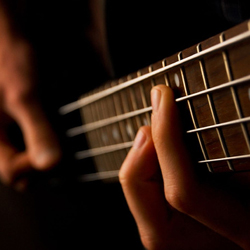I’ve been asked by a few people how I would go about getting a bass sound, since I’ve mentioned before that I’d approach things differently.
Actually, the sound of the bass isn’t as important as the relationship it has with the kick and snare drums, since they all reinforce one another if blended correctly.
Here’s my approach, assuming that both the bass and the drums are recorded well and sound pretty good to begin with, which is key.
1) Bring up the bass and drums together and have a listen to how they work together first. Don’t solo anything and especially don’t solo, then reach for the EQ just yet. Just listen to see what’s needed.
2) It’s usually a good idea to take the high pass filter and set it to about 40Hz (maybe a bit lower, depending upon the Q of the filter) on the kick and maybe as high as 50Hz on the bass to get rid of any of the unwanted and unneeded frequencies down below that get in the way. You’d be surprised how much this one trick cleans things up.
3) While listening to both the bass and the drums, add some low end on the kick between 60 and 80Hz if needed.
Some kicks also require a small (2-3dB) dip at somewhere between 400 and 800Hz. To add some definition, boost a little between 3 and 5kHz, but realize that whatever you do here might get in the way of the vocal.
4) The bass usually speaks best if any low end added is about an octave above the kick, so if the kick was EQ’d at 60Hz, then try boosting at 120Hz first.
Keep in mind that it might sound better at 100 or 150Hz instead, depending upon the instrument, the song, the arrangement and the player, so try all those frequencies before you settle on one. Remember that you should be listening to the drums at the same time you’re EQing the bass.
One of the problems that inexperienced mixers have is that they boost the very low frequencies (40-60Hz) of the bass first, which only muddies things up and makes it disappear on small speakers. A solid round low end with better definition usually comes from 100Hz upward.
5) For more definition on the bass, add a little 700Hz or so, or at the exact frequency that you dipped the kick drum.
6) For some snap or buzz, add some 1 to 3kHz on the bass.
7) Make sure than any frequencies that you boost on the snare haven’t already been boosted on the kick and bass. 125Hz gives it some bottom, but if the bass is already boosted there you have to go a little higher or lower (usually higher) to make it fit.
Add some 1 to 2kHz for attack and 10kHz for some snap.
8) Sometimes it sounds better on a song if the frequencies of the kick and bass are reversed, with the bass getting boosted at 50 to 60Hz and the kick an octave or so above it.
A little juggling of these frequencies should give you a great drum and bass blend.
Bobby Owsinski is an author, producer, music industry veteran and technical consultant who has written numerous books covering all aspects of audio recording. For more information be sure to check out his website and blog.
















